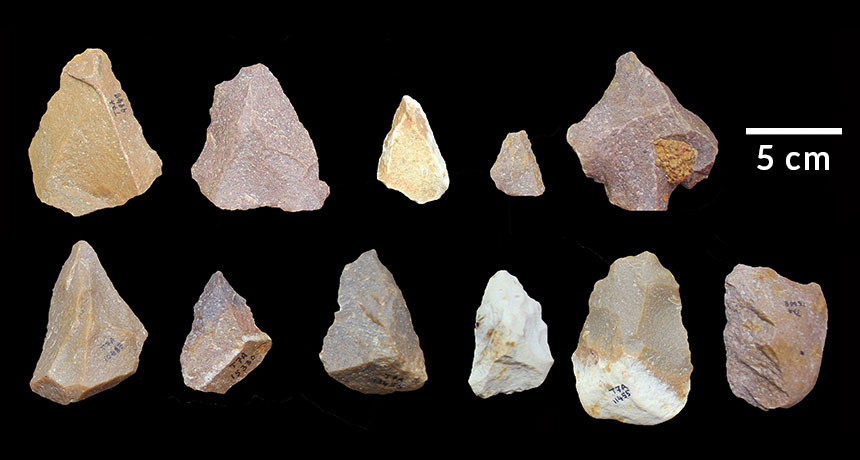
Around 400,000 years ago, human ancestors began to innovate. Suddenly the large hand axes that their predecessors had manufactured for more than a million years weren’t enough anymore. From this point they began fashioning sophisticated new kinds of stone tools. A site on the Indian subcontinent became one of such innovation centers, a kind of Middle Paleolithic Silicon Valley.
Some humanlike populations reached South Asia shortly before Homo sapiens appeared in Africa, which occurred around 300,000 years ago. Archeologists of the Sharma Center for Heritage Education, India, studied about 7,200 stone artifacts from Attirampakkam, a site on India’s southeast coast that span the time between around 385,000 and 172,000 years ago. Currently, it’s unknown who made the Attirampakkam tools because we lack fossil hominids for this time period in India. Genetic evidence suggests Homo sapiens spread across South Asia only after 60,000 years ago.
Stone tools from Attirampakkam show signature elements of the Middle Paleolithic, including tools manufactured using the so-called Levallois strategy for obtaining thin, broad flakes from a stone core. The researchers determined the age of the tools using a technique known as luminescence dating. The Attirampakkam tools are the oldest Middle Paleolithic tools in India, besting the previous record holders by more than 200,000 years.
Unlike earlier populations, Middle Paleolithic toolmakers followed a set of steps to prepare chunks of rock before pounding off sharp tools. Until now, researchers had assumed that the transition from more primitive tools such as hand axes, which emerged in Africa nearly 2 million years ago, to Middle Paleolithic implements happened in South Asia between 90,000 and 140,000 years ago.
Photo credit: Sharma Centre for Heritage Education, India.